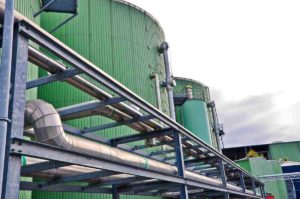Sludge dewatering is a crucial part of the wastewater treatment process. Basically, it refers to efforts made to reduce waste by volume, preparing it for effective disposal. Sludge originates during the treatment process, before the water itself is released back to the environment. In other words, sludge is a byproduct, created as the water itself is cleaned and treated. Necessary though it may be, it leaves wastewater treatment companies with a separate problem: How can they conveniently, cost-effectively eliminate that sludge, in a way that is ecologically friendly?
The short answer is sludge dewatering… but in order to handle sludge as efficiently as possible, it’s first necessary to seek sludge dewatering rental equipment.
First Things First: What is Sludge?
Before we get into the ins and outs of finding pump rental services, it’s important to clarify some important terms. To begin with, what exactly is sludge?
Basically, sludge is just the semi-solid slurry that’s created as a byproduct of many municipal and industrial processes, with wastewater treatment being the most common example.
With the use of a dewatering pump rental, this sludge is concentrated into dense cakes, which makes disposing of them much easier and more affordable.
The Benefits of Sludge Dewatering
There are a number of specific benefits to the sludge dewatering process, all of which can be realized through a pump rental. Some of the primary benefits of dewatering water treatment include:
- The volume of waste is reduced. This allows that waste to be disposed of in a much more economical way.
- Reduced transportation costs. More specifically, the sludge dewatering process makes it much easier and more affordable to store and transport leftover waste.
- Less risk of spilling/leaking. Because sludge dewatering turns slurry into high-solid cakes, it effectively eliminates the risk of there being an environmentally hazardous spill or leak.
- Wastewater can be recycled. With sludge removed, wastewater can be more effectively and efficiently recycled.
These are just a few reasons why it can be wise to pursue dewatering water treatment options.
What to Look for in a Dewatering Pump Rental
As for how to locate the best pump rental, there are a few things to keep in mind.
- Seek companies that offer different technological options. Not all wastewater treatment applications require the same level of sludge dewatering. The technology that’s right in one setting may be all wrong in another setting. Look for a company that has multiple pumps to choose from and can help you find a solution that’s customized to fit your needs.
- Inquire about personnel. Sometimes, you need more than just the equipment. It can ultimately save you time and hassle to enlist trained personnel who can complete the process as quickly and efficiently as possible.
- Consider rapid deployment. Do you need sludge dewatering services in a hurry? Some companies offer emergency response options, meaning they can deploy a pump in a very short span of time.
- Ask about down time. Sometimes, the sludge dewatering process requires a suspension of your normal operations, which translates into lost productivity. A good dewatering pump rental company will take measures to keep that downtime to a minimum.
As you consider your options for dewatering equipment, keep P&H Senesac in mind. For decades, we have been a leading expert in sludge dewatering rental equipment and in anaerobic digester cleaning systems. We have the advanced technologies and highly trained personnel that our customers need to ensure excellent results and minimum downtime.
We’d love to answer any questions you may have about pump rentals. Reach out to the team at P&H Senesac anytime you’d like to chat.



